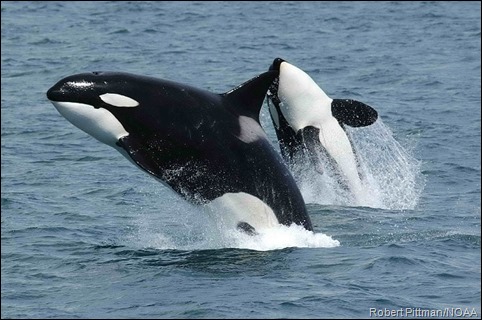“Enormously Complex” Orca Brains Lead to Great Stress in Captivity

In an interview for National Geographic, Whale Sanctuary Project President Lori Marino explains why orcas experience greater stress in marine parks and aquariums than any other species, and with belugas coming in a close second.
Dr. Marino, a neuroscientist by profession, is one of the leading authorities on the brains of cetaceans (whales and dolphins). In the article, she tells author Carl Safina that orcas have brains whose relative size is well above average, and that they are “enormously complex and highly elaborated” in regions that are to do with complex communication systems, culture and social relationships.
One example of this is that entire studies have been devoted to the kinds of complex social interactions in which they engage in the wild. They can keep track of many social relationships at the same time, rely upon learning from others, and each individual orca has a role to play in his or her culture. They lead shorter and more stressful lives in marine parks and aquariums.
One of the latest findings, laid out in a 2016 paper coauthored by Dr. Marino, is that dolphins have more than one ascending auditory tract. That means that sound is processed in two completely different areas of the brain. That’s an example of complexity in the way acoustic processing is integrated with cognitive processing.
We humans only have one such auditory tract, and we don’t know exactly why dolphins (and probably other cetaceans) have two. But we might guess that one of them is to do with processing whistles, while the other is to do with echolocation.
In answer to a question by Dr. Safina about what led her to want to create a seaside sanctuary for whales who are retired from captivity, she says:
For years, we’ve watched dolphins and whales succumbing to the effects of living in concrete tanks and being forced to perform for food. Some of us decided that we needed to move beyond observing and into the realm of providing a realistic solution to these problems. And that is when we decided to build the first permanent seaside sanctuary for these animals.
It is precisely because of their sophisticated intelligence and their naturally complex social relationships that whales and dolphins are so unsuited to life in a concrete tank. The simple fact is they lead shorter and more stressful lives in marine parks and aquariums than their wild counterparts.
It really is not a matter of making the tanks a little bit bigger or deeper or forcing them to perform more “naturalistic” behaviors. The whole enterprise of keeping cetaceans for entertainment and/or research just doesn’t work and the scientific data are abundantly clear on this issue.
You can read the whole interview here.
